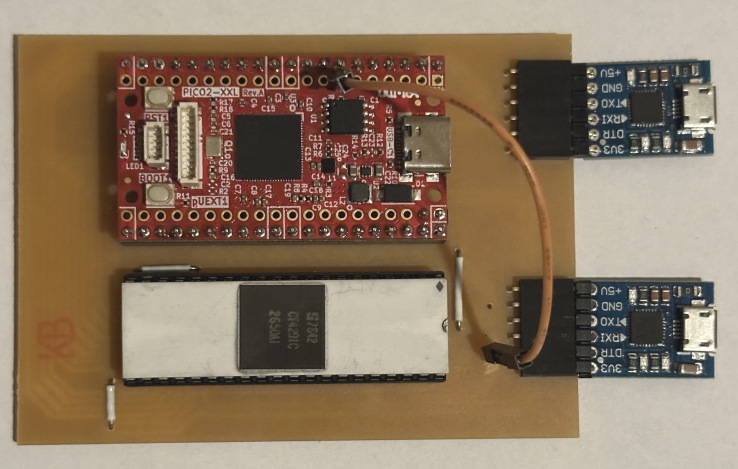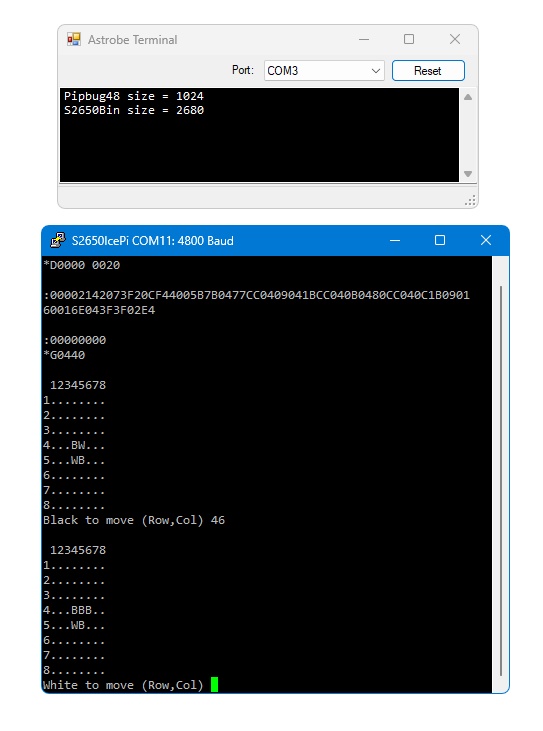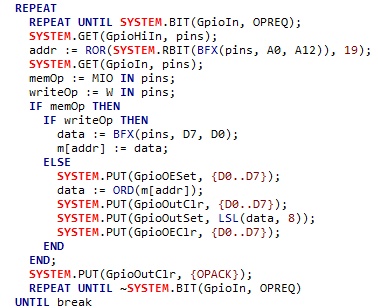
The RP2350B board I used is the Olimex Pico2-XL. Being able to access up to 48 GPIO pins came in very useful. There are two USB / RS232 adapter boards on this prototype. One communicates directly with the 2650 SENSE and FLAG serial IO running at 4800 Baud. The application shown is the game of Othello (a.k.a. Reversi) which I wrote in 2650 assembler back in the 1980's

S2650 IcePi is an RP2350B application 100% coded in Oberon using Astrobe of course. The second USB / RS232 adapters connects to RX/TX on the RP2350 to communicate via the Astrobe terminal. The opportunities for tracing and debugging in realtime are endless as all of the data and address traffic to / from the 2650 is intercepted by S2650 IcePi. This came in very useful during development.

